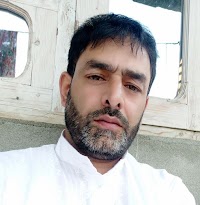Our Past II | JANDKNCERT
The Making of Regional Cultures | History VII | Questions and Answers
Chapter 7: The Making of Regional Cultures
Let’s Recall
1. Match the following:
Answer:
|
Column A |
Column B |
|
Anantavarman |
Orissa |
|
Jagannatha |
Puri |
|
Mahodayapuram |
Kerala |
|
Lilatilakam |
Kerala |
|
Mangalakavya |
Bengal |
|
Miniature |
Kangra |
Question 2. What is
Manipravalam? Name a book written in that language.
Answer: Manipravalam is a literary style that blends Malayalam and
Sanskrit. A famous book written in this language is Lilatilakam.
Question 3. Who were
the major patrons of Kathak?
Answer: The major patrons of Kathak were the Mughal emperors
and later the nawabs of Awadh. They helped develop Kathak into a
sophisticated dance form with themes of love and devotion.
Question 4. What are
the important architectural features of the temples of Bengal?
Answer: Temples in Bengal were mostly small, built with terracotta
bricks, and had curved roofs that resembled bamboo huts. Many temples had
intricate terracotta carvings depicting scenes from epics and daily
life.
Question 5. Write a
note on Basohli school of painting.
Answer: The Basohli school of painting flourished in the
17th–18th century in the Jammu region. It is known for its bold
colours, stylized figures, and religious themes, especially
those depicting scenes from the Bhagavata Purana and Krishna Leela.
Question 6. Write a
note on the development of Dogri in Medieval Jammu.
Answer: During the medieval period, Dogri, the local language of
Jammu, began developing through oral traditions, songs, and folk tales. It
became an important medium of cultural expression, and local courts and poets
began to use it in literature and daily life.
Question 7. Where are
the Buddhist rock reliefs mainly found in Ladakh?
Answer: The Buddhist rock reliefs in Ladakh are mainly found in the
region between Dras and the Suru Valley. These include large rock carvings
of the Buddha and other deities.
Let’s
Discuss
Question 8. Why did
minstrels proclaim the achievements of heroes?
Answer: Minstrels proclaimed the achievements of heroes to celebrate
their bravery and inspire others. These stories helped preserve historical
memory and strengthened the cultural identity of communities.
Question 9. Why do we
know much more about the cultural practices of rulers than about those of
ordinary people?
Answer: We know more about the cultural practices of rulers because they
had the resources to record their achievements, build monuments, and
commission art. In contrast, ordinary people often passed on their culture orally,
which was not always preserved.
Question 10. Why did
conquerors try to control the temple of Jagannatha at Puri?
Answer: The temple of Jagannatha at Puri was a symbol of religious
and political power. Controlling it meant gaining legitimacy and
influence over the local population, so conquerors tried to associate
themselves with the deity and gain popular support.
Question 11. Why were
temples built in Bengal?
Answer: Temples were built in Bengal by local landlords and rulers
to demonstrate their power and piety. They also served as centers of social
and cultural life and showcased the prosperity and artistic skills of the
region.






.webp)




Leave your comment here.